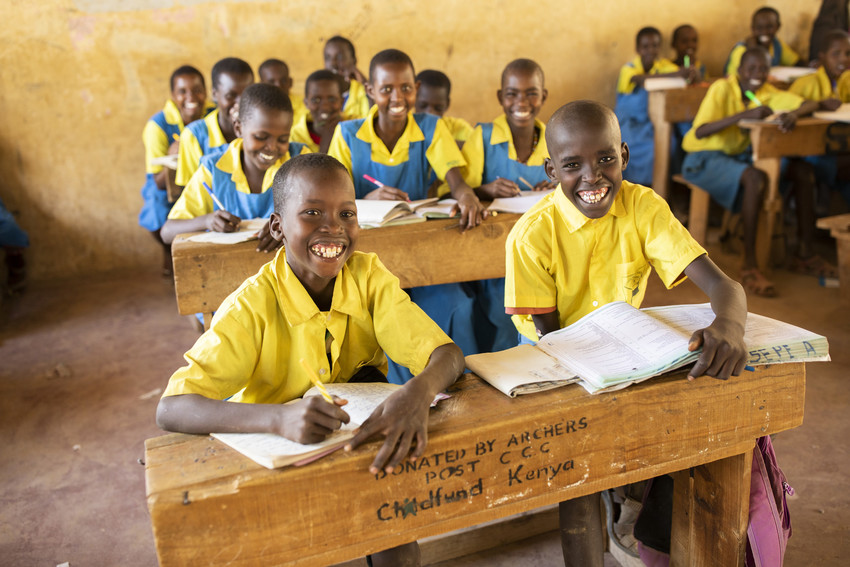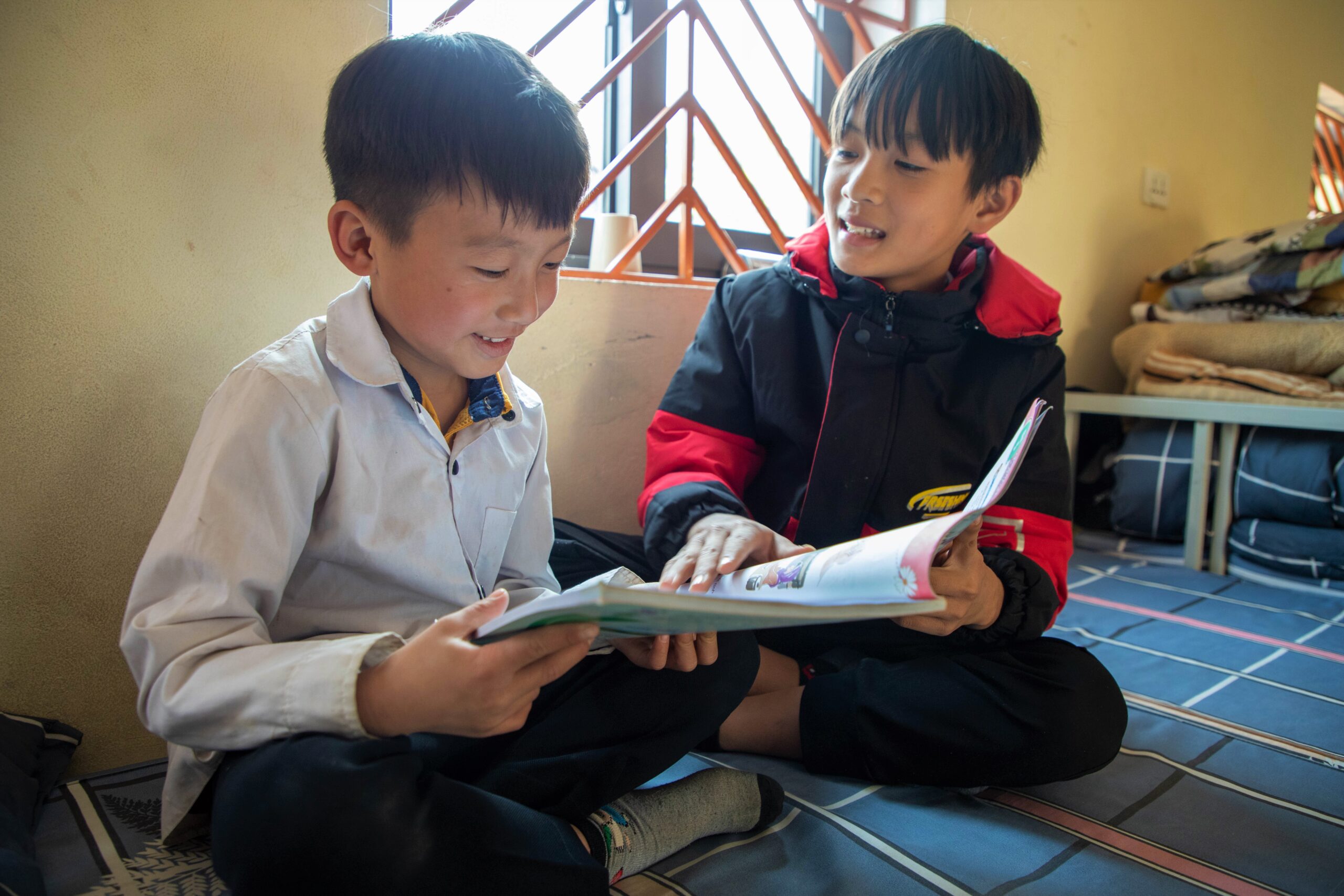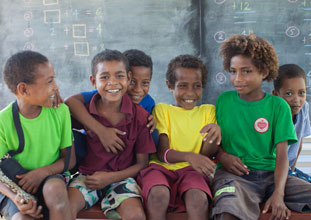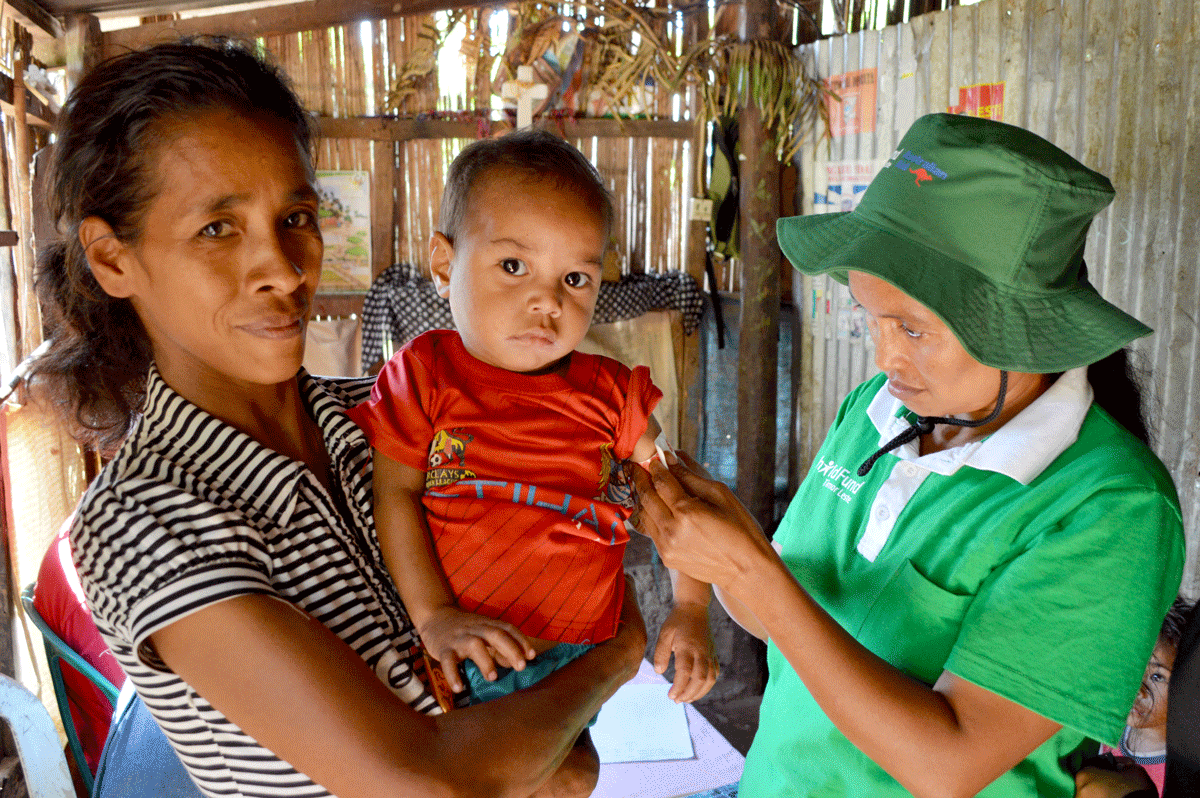Around the world, 72 million children of primary education age are not in school, and 759 million adults are illiterate – this needs to change.
This International Day of Education, we invite you to help us change the world. In the words of Malala Yousafzai, “One child, one teacher, one book, one pen can change the world.”
What is International Day of Education?
24 January 2024 marks the sixth celebration of the International Day of Education. This day, first celebrated in 2019, was proclaimed to demonstrate the importance of inclusive, equitable, and quality education for all. Education is the key that will allow many of the United Nation’s Sustainable Development Goals (SDGs) to be achieved.
Access to education can help children escape a life of poverty, reduce inequalities, and reach gender equality — all of which are crucial to fostering inclusion and more peaceful societies.
While many of us consider education a fundamental right, millions of children around the world are still denied their right to an education. The purpose of the International Day of Education is to create awareness around the importance of education and highlight ways to help children gain access to it.
Invest in people, prioritise education
The theme of International Day of Education 2024 is “Learning for lasting peace.” This January 24th, we are at a critical juncture for the health and future of our societies. As stated by UNESCO, the surge of violent conflicts worldwide, compounded by rising discrimination, racism, xenophobia, and hate speech, have led us to an important decision: continue on an unsustainable path, or radically change course.
Building on this, the International Day of Education calls for:
- global mobilisation,
- strong commitments and
- initiatives to prioritise education by investing in quality education and people.
Quality education can empower young learners with the necessary knowledge, values, attitudes and skills and behaviours to become agents of peace in their communities. It is important that we invest in young minds, encouraging them to think critically and act more respectfully and responsibly towards their peers, families and wider community.
What does inclusive, equitable, and quality education look like?
Currently, thousands of schools around the world, particularly in places such as Sub-Saharan Africa, lack access to drinking water, electricity, computers, and the internet, making it impossible for children to receive quality education. Further, even better-equipped schools do not necessarily have enough qualified teachers, and many children, particularly young girls, are kept out of school.
SDG 4 aims to achieve inclusive, equitable, and quality education and promote lifelong learning opportunities for all by 2030. Targets of SDG4 include:
- establishing free primary and secondary education
- equal access to pre-primary education for all girls and boys;
- eliminating discrimination in education;
- building and upgrading inclusive and safe schools; and
- increasing the supply of qualified teachers in developing countries, among others.
How you can get involved with International Education Day activities
You can get involved in International Day of Education by:
- Building awareness about the challenges that so many children face around the world that hinder their ability to receive a quality education.
- Sharing information and International Day of Education quotes on social media,
- Starting conversations with your friends and family, or even
- Organising educational events in your community are excellent ways to spread awareness.
- Donating to organisations working to make education accessible and equitable for all children. At ChildFund Australia, one of our leading programs is focused on providing access to early childhood education for all boys and girls. This includes constructing new schools and renovating existing schools, providing classroom furniture and equipment, and training school teachers and educational leaders.
- Donate to Gifts for Good, such as a school supplies set or tablets and computers for students.
- Donate monthly, which helps provide girls and boys with access to education.

How can my donation help?
Your donations can help to make the lives of children living in poverty easier, especially when it comes to their education. In Vietnam, the donations have proven to be extremely impactful, as they have allowed children and young people like Binh*, 13, to attend school. This is his story,
Binh’s family home is about 7km away from the primary school. But steep slopes and a bumpy road make it difficult for him to get to school and back every day – and when it rains, it is almost impossible. So, he has to live in a cramped, bamboo shack near the school since the age of seven.
Binh is a bright boy with a thirst for learning and like many children living in remote parts of the country, he never wants to give up his education. During the school week, it is very common for students to stay in temporary homes near the school. These are often poorly built and do not protect the children from the elements. It also means that they must care for themselves from a very young age.
“I used to share a bed with two others, and it was very small and narrow. Every day after school I would come back, cook for myself and do all the washing,” said Binh.
In 2021 ChildFund Vietnam supported a project to build a two-story semi-boarding house equipped with a kitchen, living area, and bunk beds. They also organised training for the students to build the necessary skills of the students so that they could live independently and lead a healthy life.

Binh (right) helping his roommate with his studies.
At the age of 12, Binh moved into the new semi-boarding house and was selected to be the lead tenant of his boarding room.
“The lead tenant’s responsibility is to help and remind other roommates to clean the living place, make their beds and keep personal hygiene,” said Binh. “I’ve been through various trainings like injury prevention, first-aid, and personal hygiene habits. They were all very useful and fun.”
Binh faces many challenges in this role as a lead tenant and sometimes his roommates do not listen to him.
“Being the lead tenant is not always easy. Sometimes the roommates don’t follow what I say. I always try to set a good example for them,” said Binh. When challenged, he puts what he learned at the training into action.
“At the training, many of us were shy at the beginning but after some warm-up activities and exciting games, we felt much more engaged and energised. I applied what I learned to guide my roommates effectively. For example, when one can wash his hands right, I give him compliments,” said Binh.
Now that they have a safe, and healthy environment to live in, Binh and his peers thoroughly enjoy school life. “I love living in the semi-boarding house. It is nice with lots of trees and flowers. Each room has sanitation stations and bright light bulbs that help us study better. I have also made a lot of friends that I can play with.”
Looking to the future, ChildFund will continue to support children, schools, and communities to improve independent living skills and facilities so that students like Binh can have a safe space to learn and grow.
Make education accessible for kids like Binh this International Day of Education. Donate to ChildFund.
*Names have been changed.

